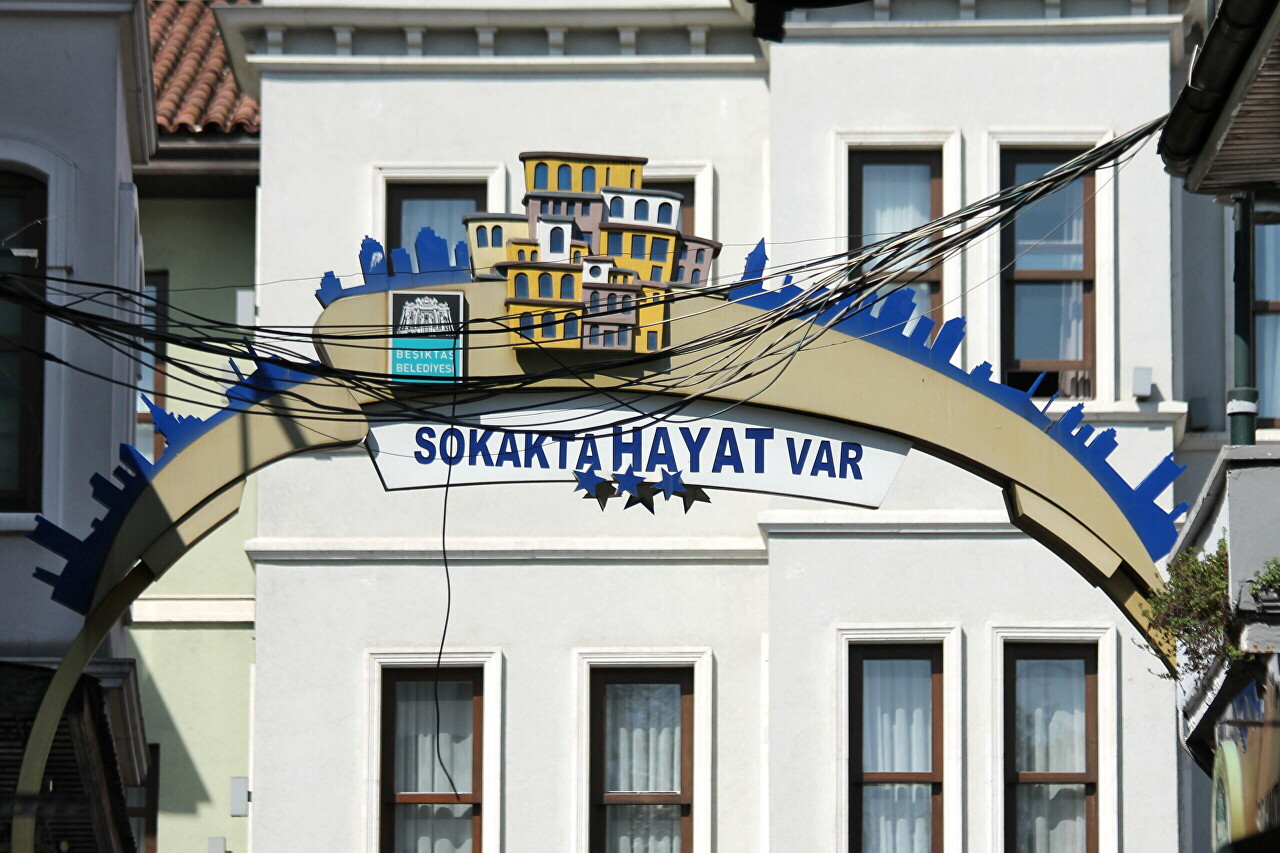Streets of the Ortaköy Quarter
After going through all the nooks and crannies of the Ortaköy market, I found Muallim Naci. The main thoroughfare along the European shore of the Bosphorus runs along the street.
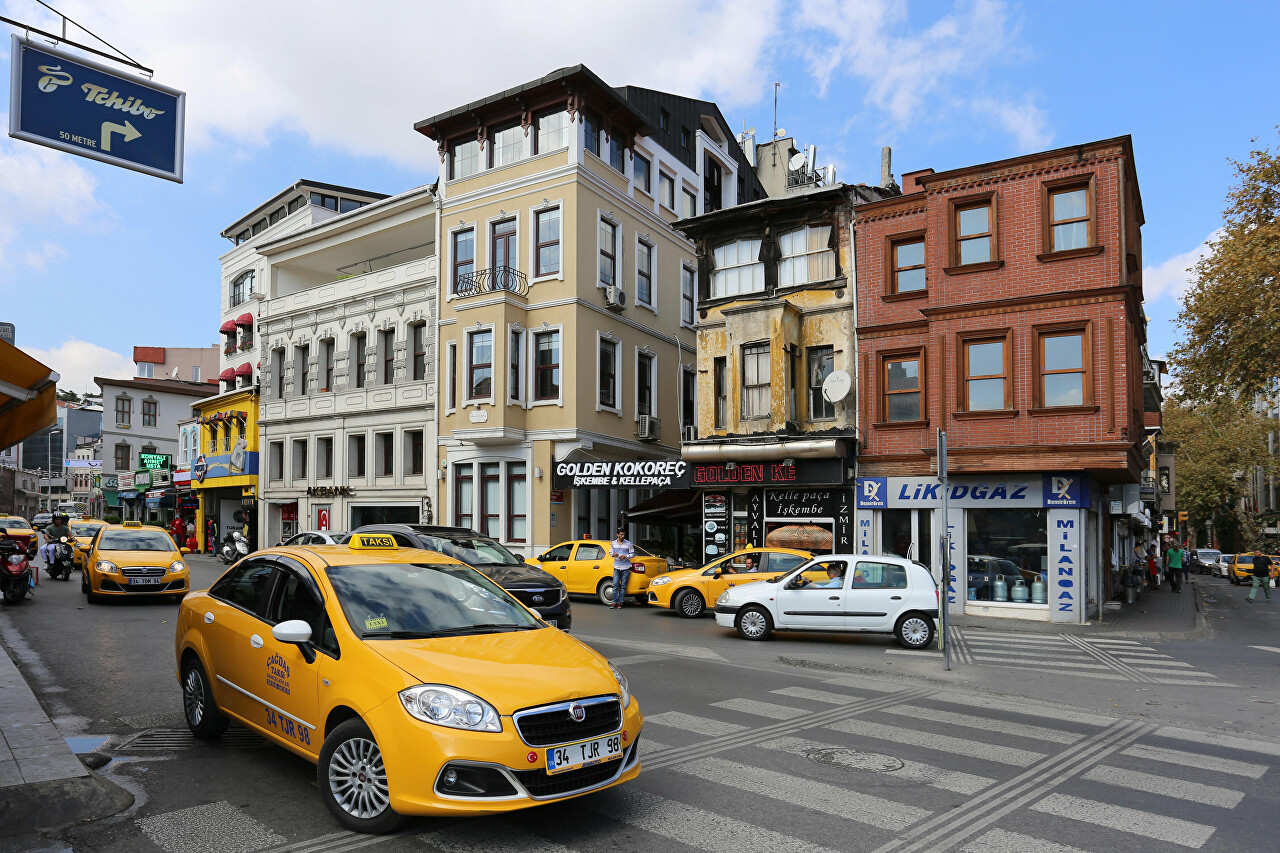
It is home to the oldest surviving building in the quarter, the Tarihi Hüsrev Ketüda Hamamı bathhouse, built in 1565. The bathhouse is named after an official of the Grand Vizier Kara Ahmet Pasha, who supervised its construction. For more than three hundred years, the building performed its original function, then it was abandoned for a long time. In 2001, the building was restored and a restaurant was opened in it. In 2011, the building was purchased by the city administration and given the status of a historical monument, now known as Bani Ortaköy Hamamı. As a result of the restoration, the building was restored to its historical appearance and in 2017 a hall for holding cultural events was opened here.
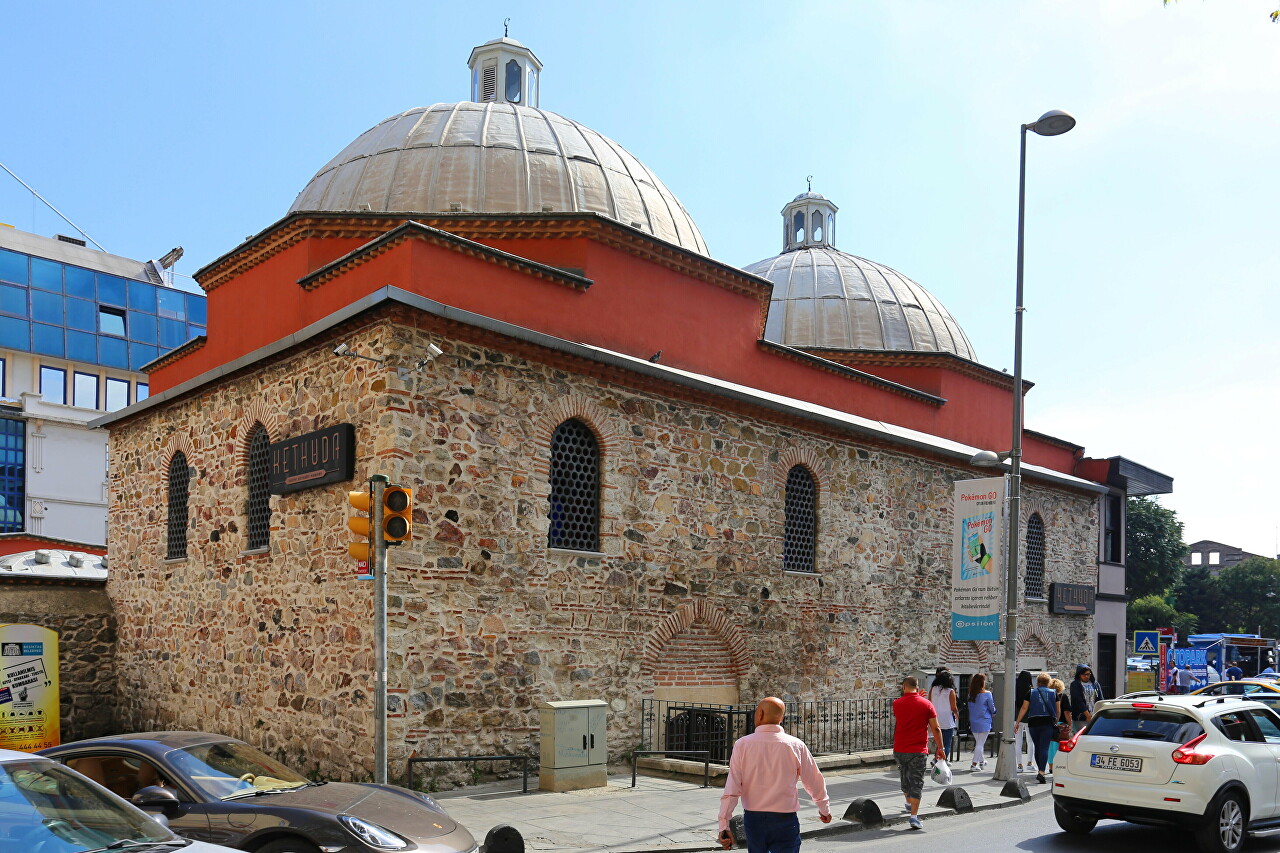
A hundred and fifty meters to the east is the 15 July Martyrs ' Bridge (15 Temmuz Şehitler Köprüsü), named after the 2016 military coup attempt. Before that, it was simply called the Bosphorus Bridge (Boğaziçi Köprüsü). This is the first bridge across the Bosphorus, it was opened in 1973, has a span length of 1074 meters and a height of pylons of 165 meters.
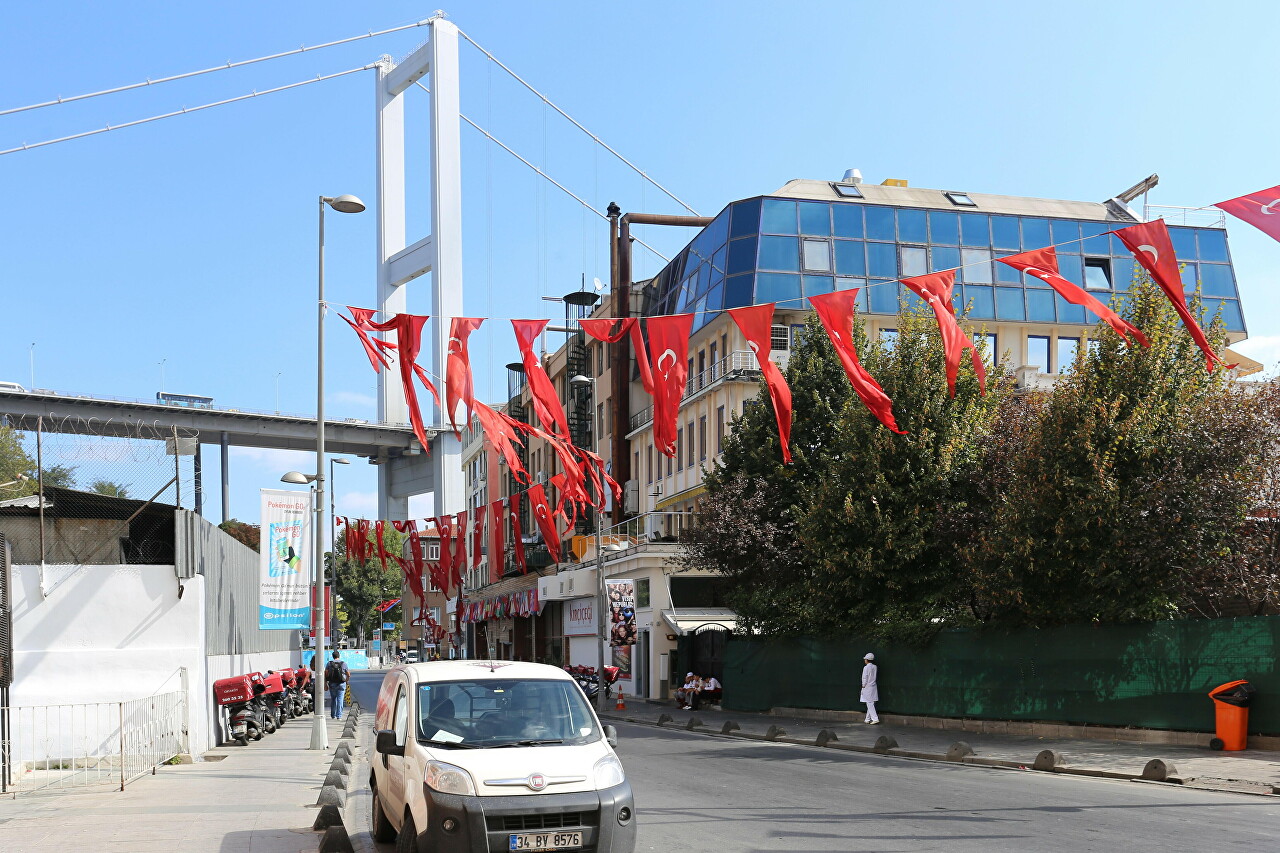
Opposite the bathhouse, you can see a continuous row of buildings in which various public catering enterprises are located.

Their kitchens open directly to the street, and food can be obtained directly from the stove.
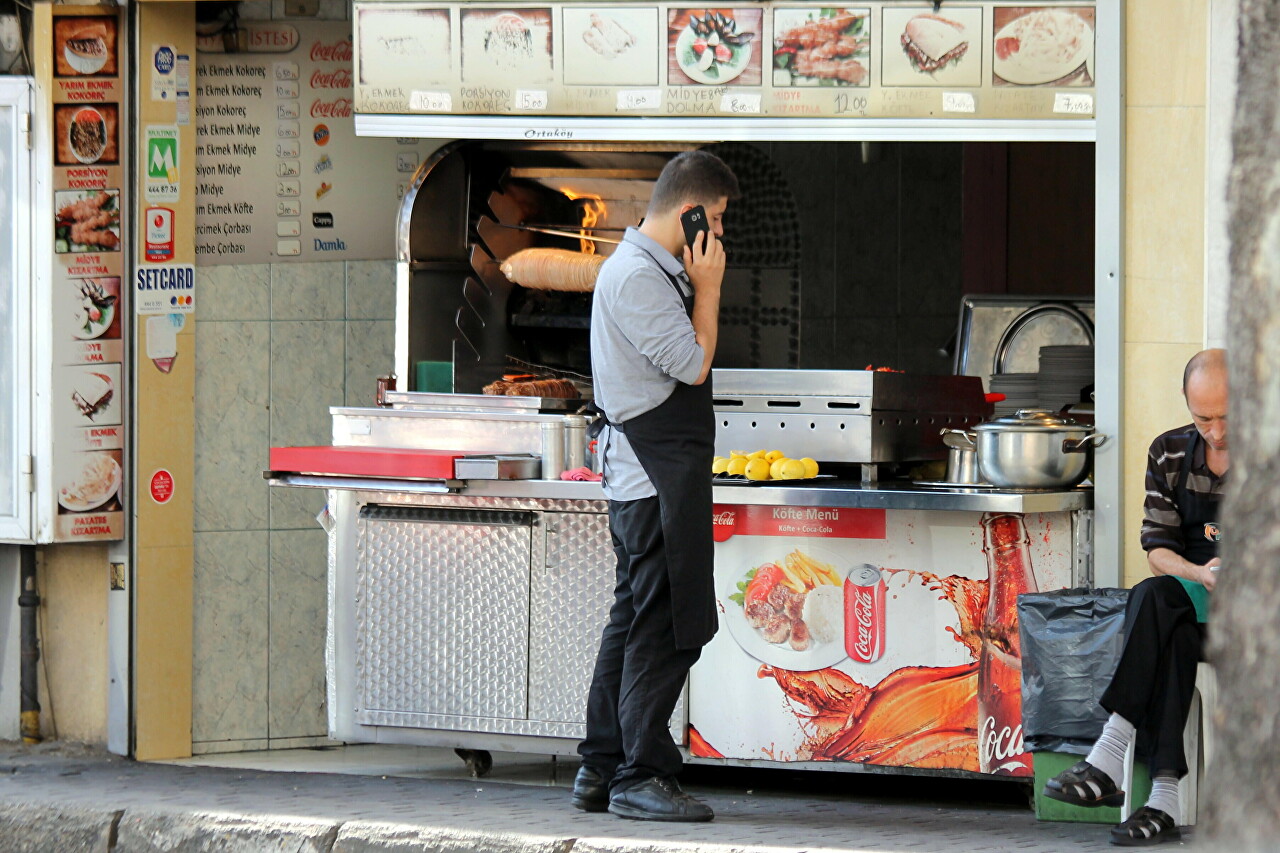
Here they roast meat and fish and, of course, chestnuts.
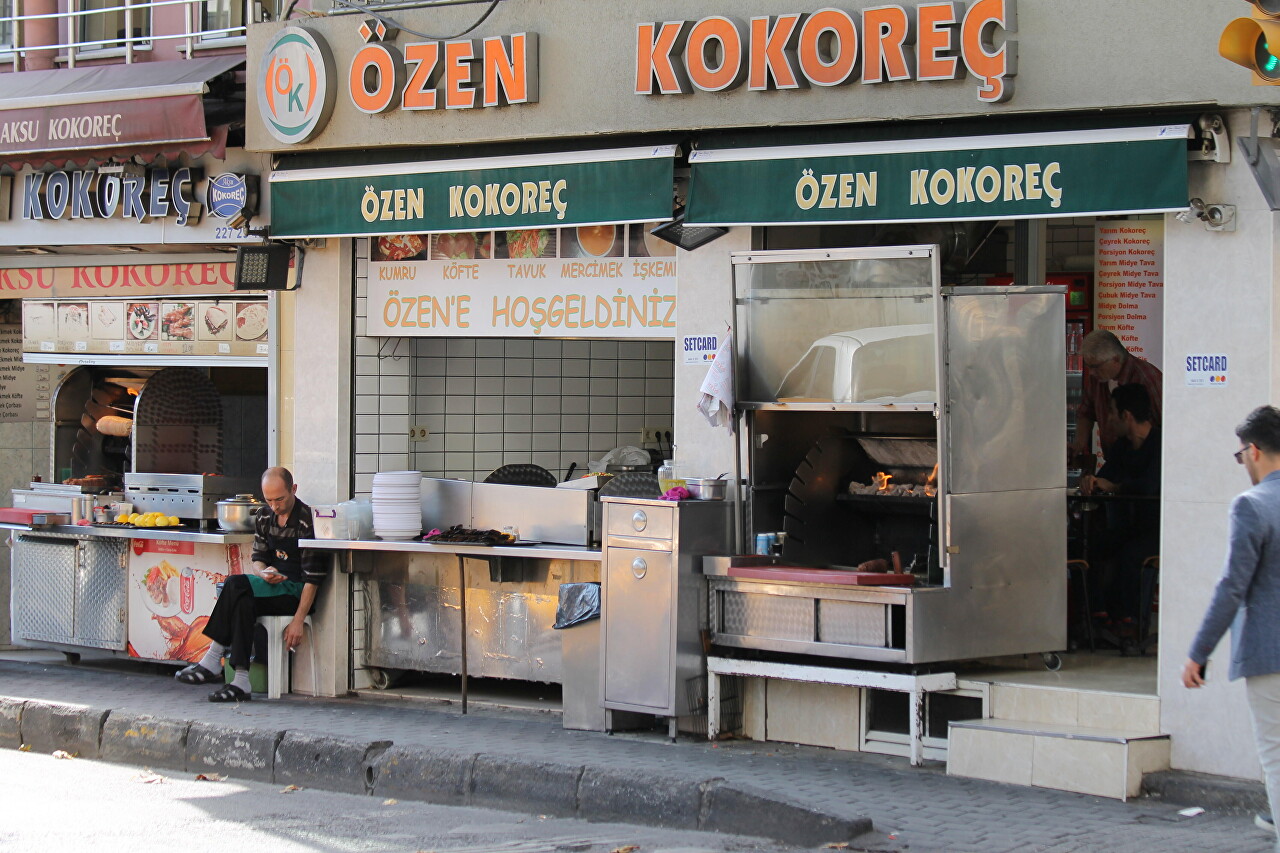
On the tree hang bags in which seasonings are dried.
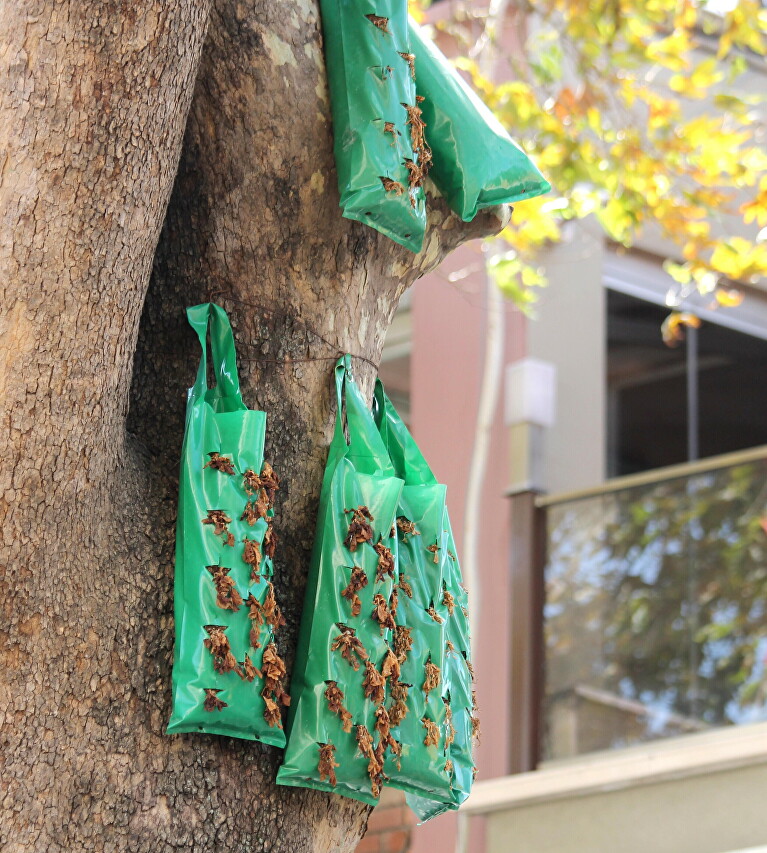
Many of these cafes, restaurants and small shops occupy the intricate maze of alleys between Taş Basamak and Dereboyou streets .
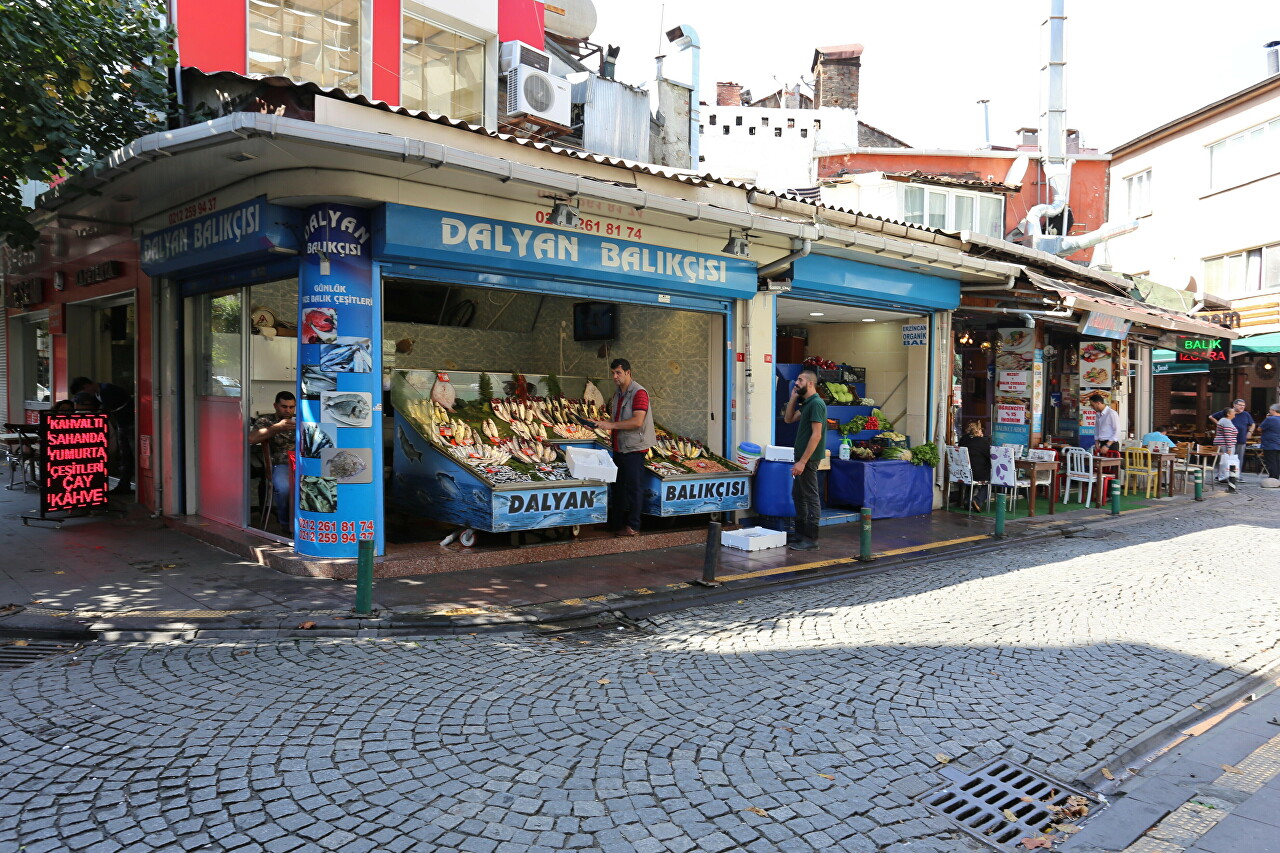
Inside this block, the buildings are not as presentable as on the surrounding streets.
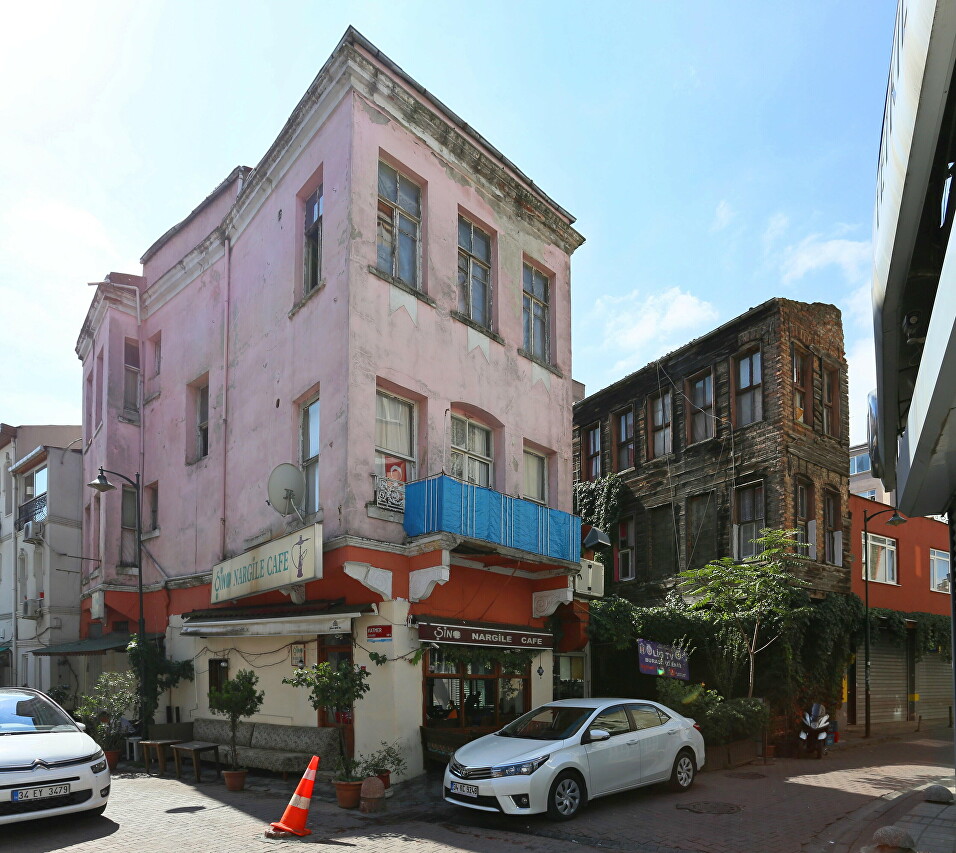
In one of the alleys, my attention was drawn to a narrow three-story building, which I considered an atypical example of Ottoman wooden architecture. But up close, it turned out that it was built of modern hollow bricks and only covered with boards, most of which fell off.
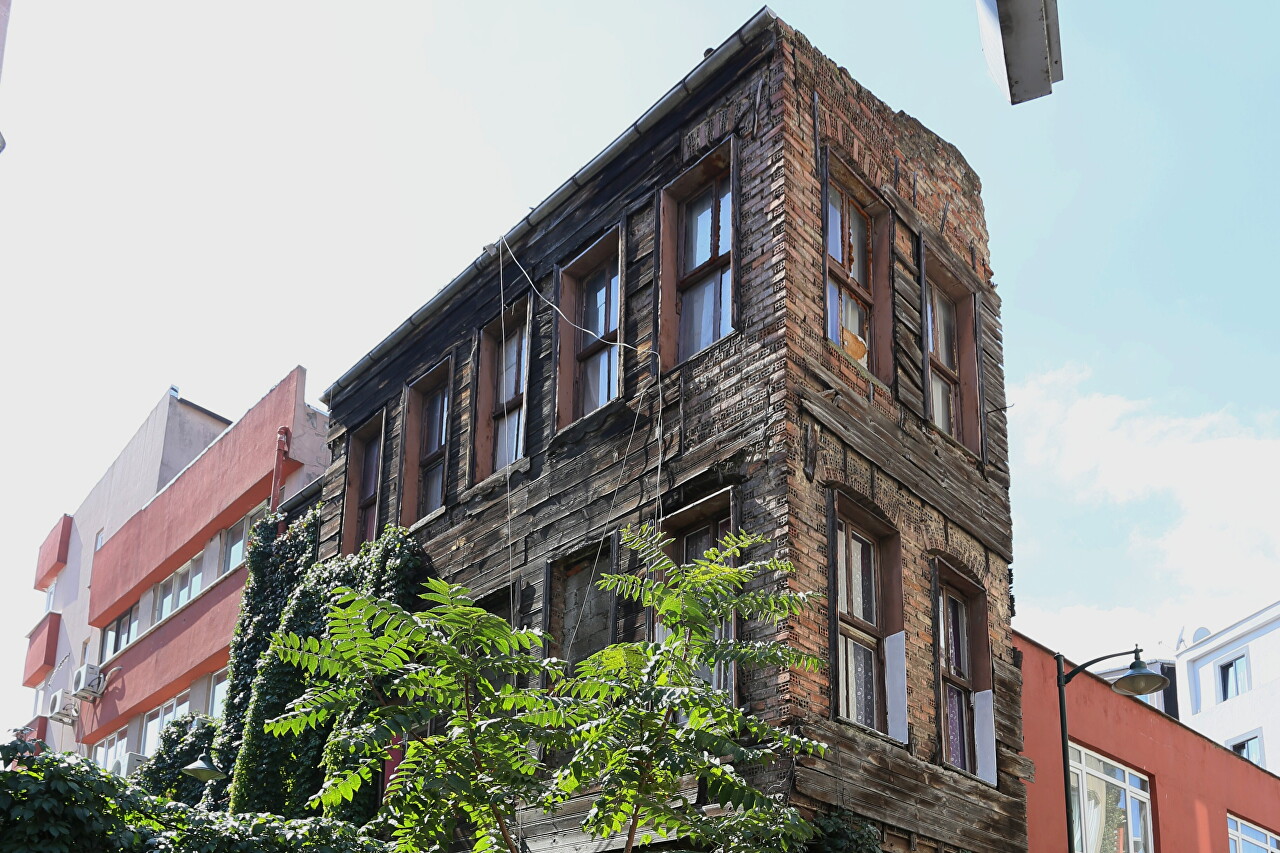
On the ground floor there is a street cafe, richly decorated with vegetation.
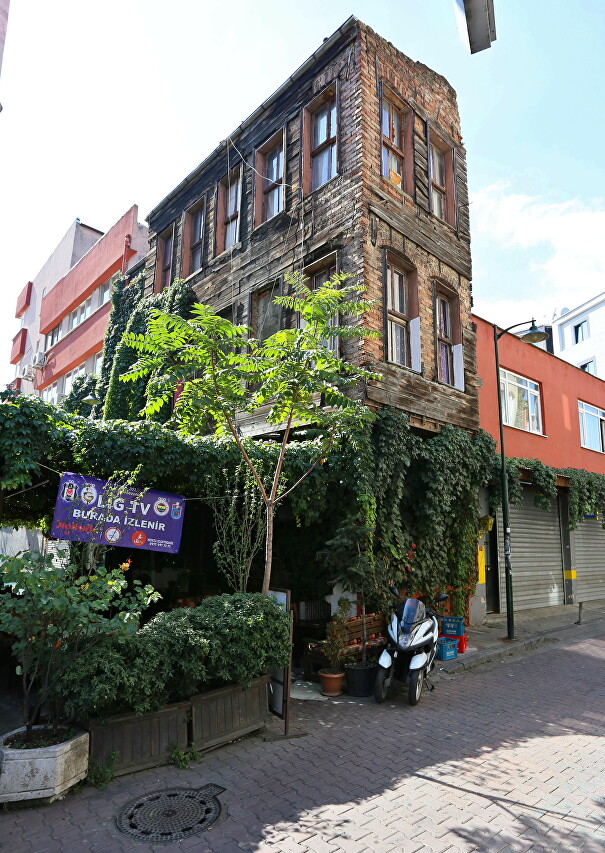
After wandering a bit through the short crooked alleys, I found myself on Muallim Naci Street .
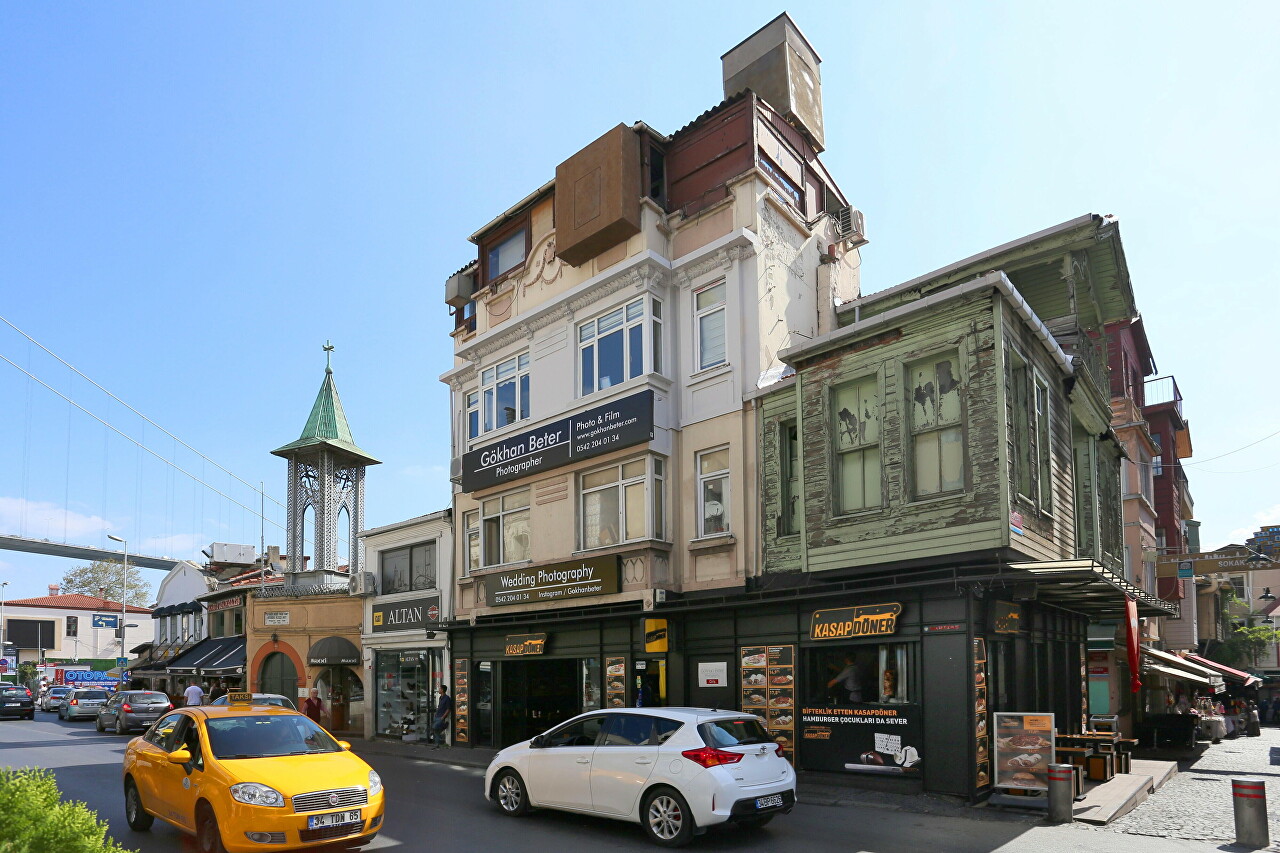
Here I still found a classic wooden house from the Ottoman period, with a mezzanine and a veranda, although the upper part of the house is in a neglected state, only the lower floor is used.
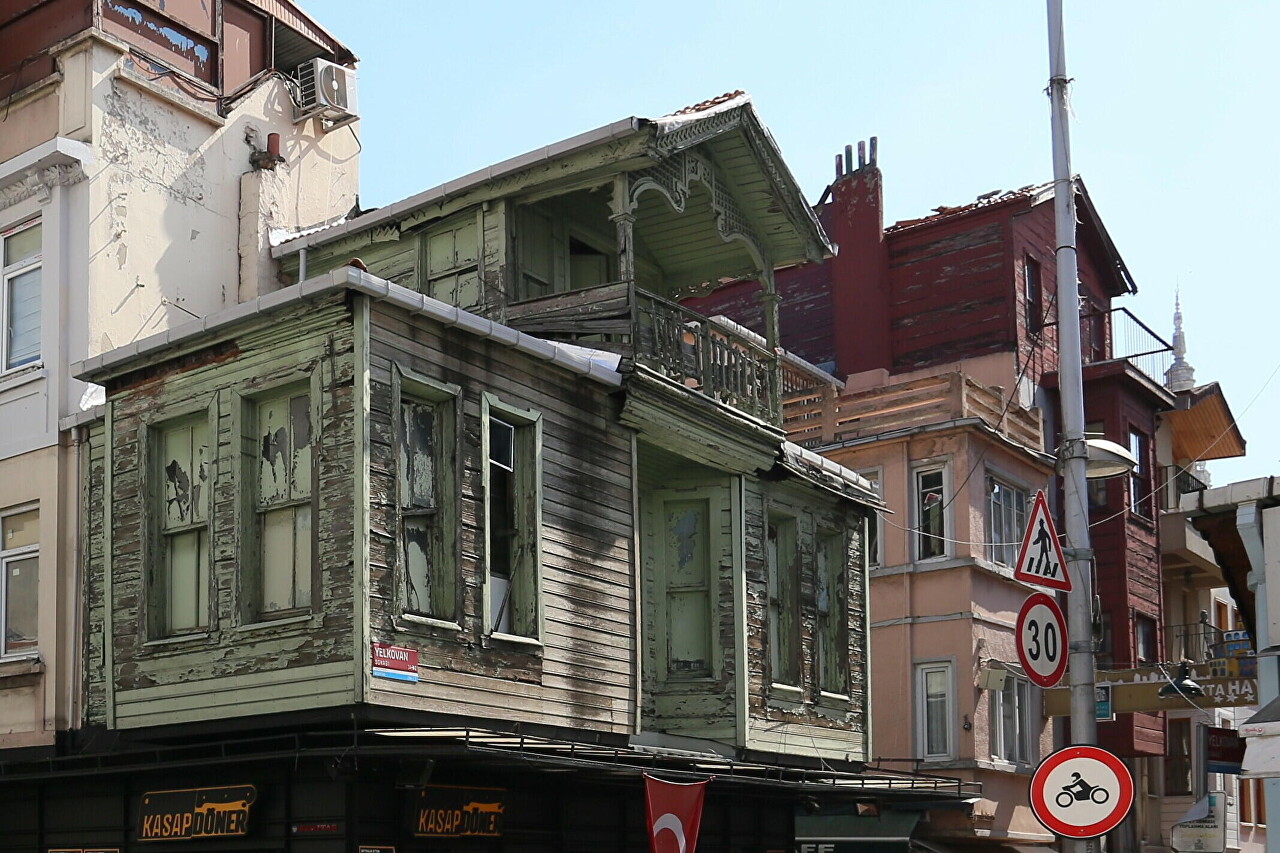
Through two houses you can see an openwork tower with a cross, this is the entrance to the Greek Orthodox Church of St. Phocas. Don't be surprised by the modest size, the church itself is large and located deep in the development.
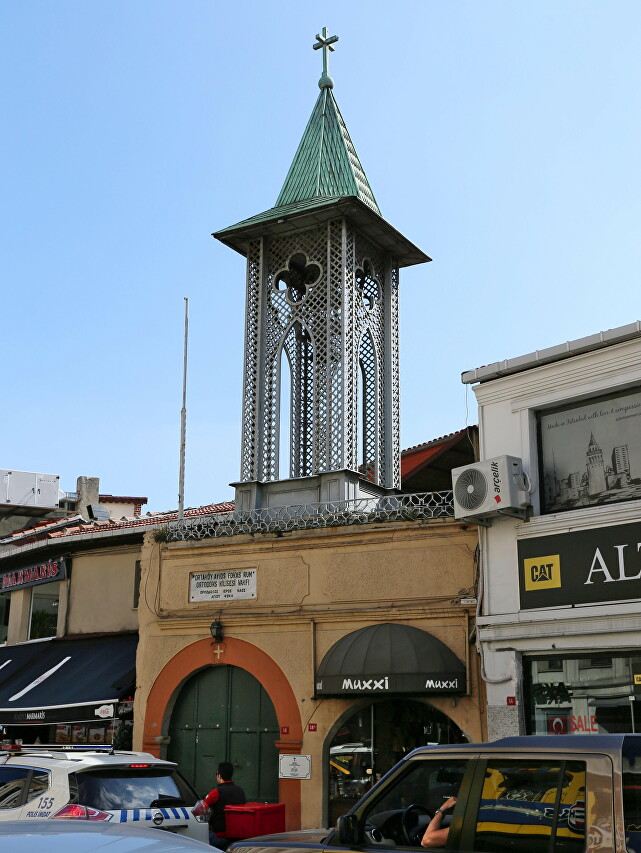
Then I plunged back into the maze of streets, heading for Ortaköy Square.

There are also a lot of cafes and restans here, but this is a completely different type, not like I have already seen.
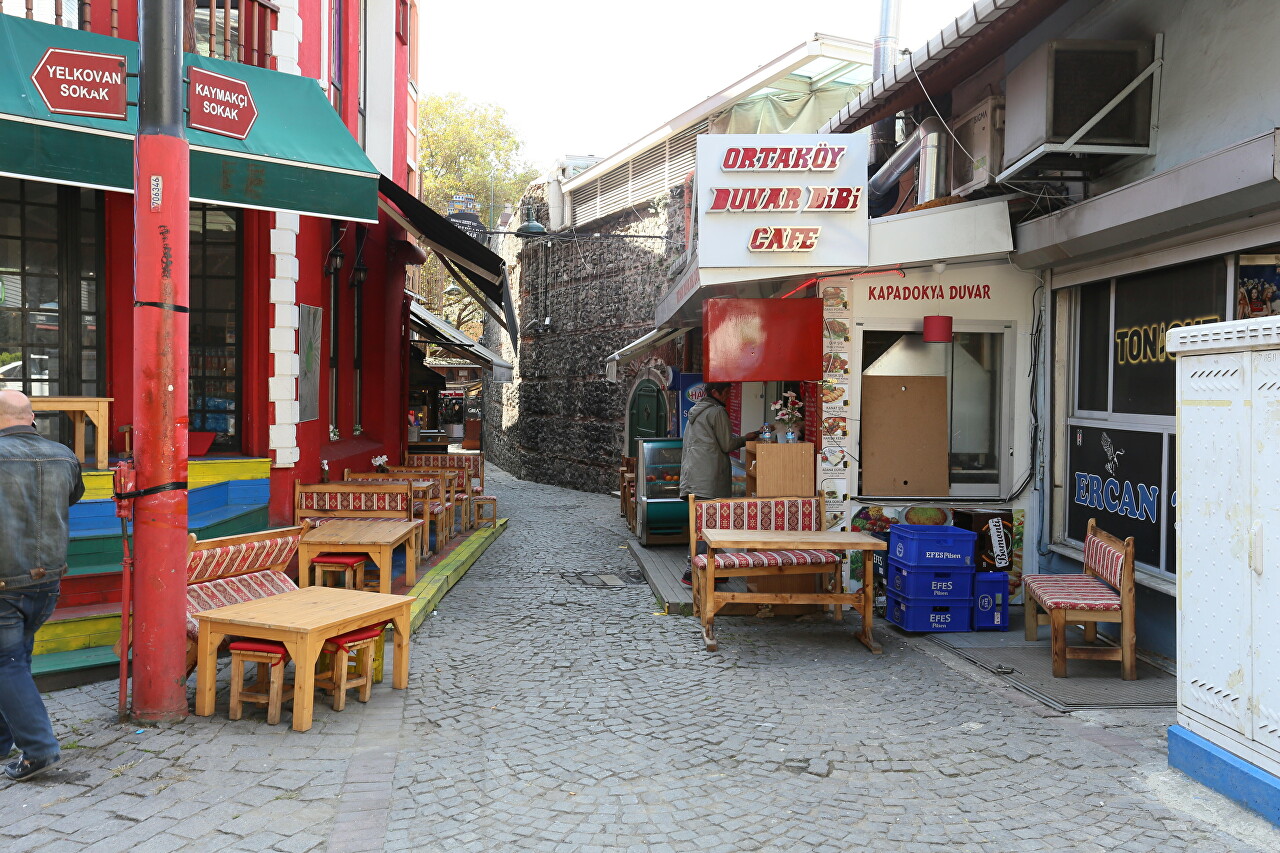
Those cafes were designed for fast food, most did not even have seats, and these are intended for a leisurely rest. However, neither there nor here were any visitors in sight, despite it being a Sunday afternoon. It might be busy tonight.
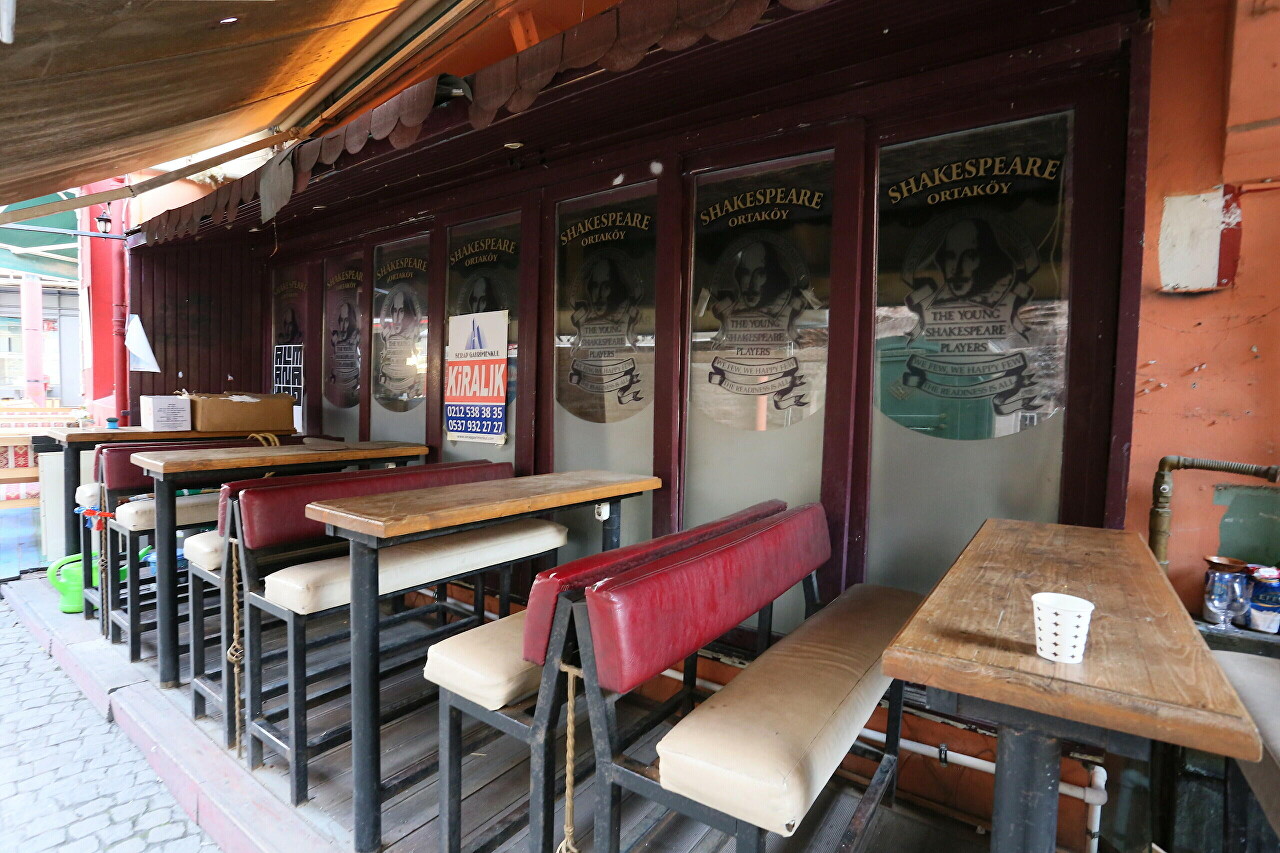
An archway above the alley invites you to the Sokakta Hayat var entertainment center.
